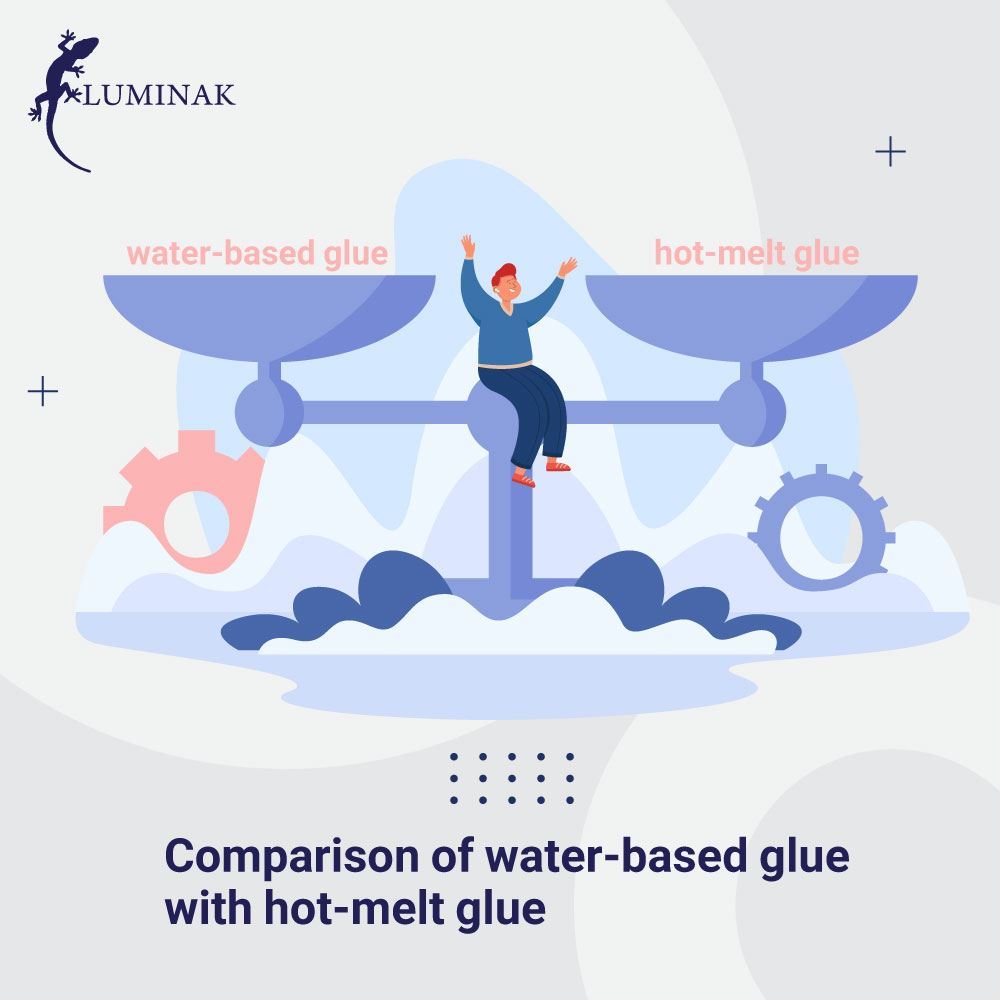Water-based adhesives and hot melt adhesives are two prominent types, each with distinct characteristics, offering unique advantages in various applications.
Water-Based Adhesives:
Water-based adhesives, as the name suggests, utilize water as a carrier. They are recognized for their environmental friendliness, low toxicity, and minimal volatile organic compounds (VOCs). This makes them a preferred choice in industries where sustainability and reduced environmental impact are crucial. Common applications include packaging, paper converting, woodworking, and product assembly.
Advantages:
Eco-Friendly: Low environmental impact and minimal emissions
Versatility: Suitable for a wide range of materials
Low VOCs: Conforms to environmental regulations
Hot Melt Adhesives:
Hot melt adhesives, on the other hand, are thermoplastic polymers that melt when heated and solidify upon cooling. They are known for their quick-setting properties, making them ideal for high-speed production lines. Industries such as packaging, automotive, electronics, and construction benefit from their versatility and immediate bonding capabilities.
Advantages:
Fast Bonding: Rapid setting enhances production efficiency
Versatility: Suitable for various materials and applications
Convenience: No drying or curing time required
Choosing the Right Adhesive:
The selection between water-based and hot melt adhesives depends on specific application requirements. Water-based adhesives are favored for environmentally sensitive applications and projects where low toxicity is paramount. Hot melt adhesives excel in situations demanding quick bonding without compromising strength.
Market Dynamics of Adhesives: A Comparative Analysis:
The choice between water-based and hot melt adhesives largely depends on specific industry requirements and application scenarios. Water-based adhesives, with their eco-friendly profile and suitability for diverse materials, find favor in environmentally conscious sectors. The packaging, woodworking, and paper converting industries benefit from their low toxicity and minimal VOC emissions.
On the other hand, hot melt adhesives, known for rapid bonding and versatility, dominate markets with high-speed production demands. Industries such as packaging, automotive assembly, electronics, and construction favor hot melt adhesives for their immediate bonding capabilities and efficiency in fast-paced manufacturing environments.
Key Considerations:
Environmental Impact: Water-based adhesives align with sustainability goals and stringent environmental regulations.
Speed and Efficiency: Hot melt adhesives offer quick bonding, enhancing production speed and efficiency.
Material Compatibility: Both adhesives exhibit versatility, but the choice depends on the materials being bonded.
 English
English
 Arabic
Arabic
 Russian
Russian
 Chinese
Chinese
 Hindi
Hindi
 Turkish
Turkish
 فارسی
فارسی
 English
English
 بسپارگستر
بسپارگستر

Leave your comment